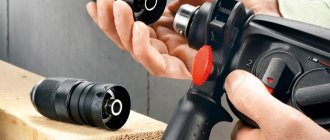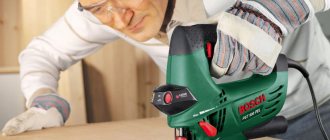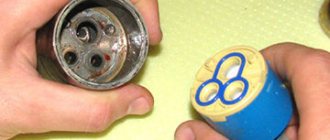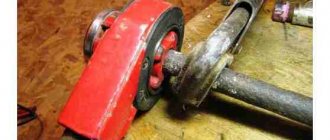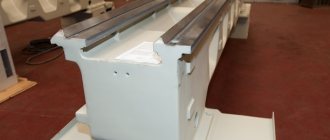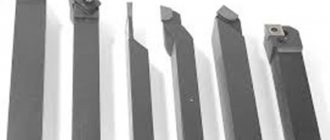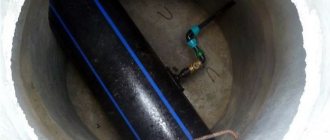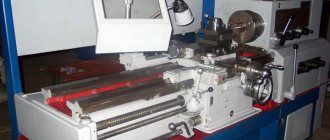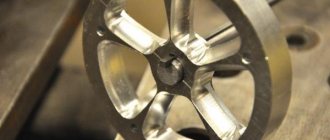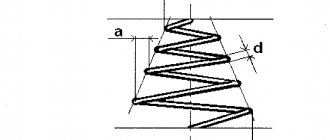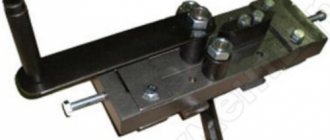Craftsmanship for the people
The process of obtaining iron alone was long and very labor-intensive. First, ore was mined in the swamps, which took most of the autumn and winter, then it was dried and roasted, and then in metal smelters it was turned into iron.
But that was only half the story. The main task fell on the shoulders of the blacksmiths. A piece of metal had to be turned into an elegant sharp sickle or a strong sword, and the manufacture of each product required special skills and craftsmanship.
As for weapons, they became the “calling card” of ancient masters. Excavations of burials of the 10th century (near the Black Tomb not far from Chernigov) revealed to us, modern people, that in many respects the military victories of the Russians rested on the art of blacksmiths who made unique products.
Blacksmithing in Rus' was the main craft Andrey Shishkin “Dozor”, 2021
Want to create a site? Find Free WordPress Themes and plugins.
Hephaestus (Ifestus), Greek, Lat. Vulcan is the son of Zeus and Hera, the god of fire and blacksmithing, the gunsmith of the gods.
Hephaestus was born lame, so an irritated Hera threw him from Olympus. He fell straight into the Ocean, but was not injured, since the sea goddesses Eurynome and Thetis took care of him. In their underwater grotto, Hephaestus grew up and learned the blacksmith's craft.
Having achieved mastery, Hephaestus made a magnificent golden throne and sent it to his mother, but this gift was dictated more by revenge than by love. As soon as Hera sat on the throne, the handcuffs worked, chaining her to it. None of the gods managed to free her, so they had no choice but to send for the author of this insidious invention.
However, Hephaestus made it clear to the messenger of the gods, Hermes, that he did not intend to return to Olympus. The Olympians had to resort to cunning: they sent the god of wine Dionysus for Hephaestus, who got him drunk and took him to Olympus on a donkey. Under the influence of wine fumes, Hephaestus forgot his old grudge, freed his mother and decided to settle in the residence of the gods.
Hephaestus even decided to get married, and his parents found him the most charming wife to compensate for his physical handicap. According to one version, he was given the goddess Charita as his wife, according to another - one of the Charites, Aglaya, according to the third (the most common) - the goddess of love and beauty Aphrodite.
The arrival of Hephaestus to Olympus had far-reaching consequences: he rebuilt and refurbished all the dwellings of the gods. No one knows what the living conditions of the gods were like before Hephaestus appeared there, and only from reports of his activities do we learn that he built them magnificent palaces of gold, silver and bronze. Naturally, Hephaestus took care of himself.
Not wanting to give up his grimy craft even here, Hephaestus set up a superbly equipped workshop in his palace. Homer talks with delight about his blacksmith's bellows, which worked automatically, obeying the mental commands of Hephaestus. Nevertheless, Hephaestus did not disdain physical labor, so he was often seen sweating and tired, which cannot be said about the other gods.
It is clear that such a jack of all trades was very popular among the gods. At the same time, they didn’t really take him seriously and were not averse to making fun of his lameness (sometimes there were not only jokes, but also the most “Homeric laughter” of the gods - for example, when Hephaestus once tried to serve them at the table instead of Hebe), and his wife Aphrodite shamelessly deceived him with Ares.
Only Hera was sympathetic to Hephaestus, apparently realizing that she had once treated him unfairly. Therefore, in Hera’s frequent disputes with Zeus, Hephaestus always stood on her side. Sometimes this cost him dearly: during another scandal, Zeus literally threw him out of Olympus.
Hephaestus flew in a huge arc (or trajectory, in the language of modern ballistics) for the whole day until he landed on the island of Lemnos. The local residents treated him kindly, and Hephaestus felt at home on Lemnos: he even set up a forge for himself in the Mosichle volcano.
When Hephaestus moved from the Greek pantheon to the Roman one (taking the name Vulcan), he equipped himself with another forge in Sicily, under Mount Etna, and another one on the nearby Aeolian Islands. Obviously, he already had a whole blacksmith shop there, since he had to take several Cyclops giants to help him.
Hephaestus almost did not interfere in the lives of mythical heroes. He limited himself to the manufacture of weapons and, like any gunsmith, sold them to both warring parties. For example, at the request of Thetis, he forged magnificent armor for her son Achilles, but at the same time, fulfilling the desire of the goddess Eos, he made similar weapons for Memnon, Achilles’ enemy. He did not interfere in wars, with one exception: during the battle under the walls of Troy, Hephaestus, at the request of Hera, tamed the river Xanthus (Scamander), whose god wanted to drown Achilles in its waves, with his fire. But all the more diligently he defended his admirers and fellow craftsmen, especially blacksmiths and everyone working with fire. And in general, people had every reason to be grateful to him: if you believe the “Homeric Hymns”, it was Hephaestus, with the help of Athena, who taught people crafts and arts, so that they would not live in forests and caves, like wild animals, but in comfortable houses and cities , where you can easily and calmly spend your life from spring to winter.
In honor of Hephaestus, the Greeks organized magnificent celebrations. In Athens there were two types of such holidays: Hephaestia and Chalkeia. The first were celebrated every year at the beginning, and from 329 BC. e. - every fourth year, in mid-November; the latter took place annually, and were celebrated primarily by the blacksmiths. In Athens, a temple in the Doric style was dedicated to Hephaestus, built in 450-440. BC e. and subsequently decorated with a cult statue by Alcamenes. The temple still rises above the ruins of the Agora - it is the best preserved of all Greek temples. (It is mistakenly called Theseion, since the sculptures of the temple depict the exploits of Theseus. Only a recent topographical study of Athens showed that originally, before the ancient temple was converted into the Temple of St. George in the 5th century AD, it was dedicated to Hephaestus.)
In contrast to vase paintings and reliefs, quite a few ancient statues of Hephaestus have survived; the most famous, perhaps, is the small bronze “Hephaestus with a blacksmith’s tool.” Many coins from Asia Minor Greece with the image of Hephaestus have been preserved - evidence of the widespread spread of his cult in those parts.
Of the numerous works of European artists, we will name only the most significant: the paintings “Vulcan’s Workshop” by Van Heemskerck (c. 1536, National Gallery in Prague) and Tintoretto (after 1577), “Hephaestus makes armor for Achilles” by Romano (1532-1534), “Venus” in the workshop of Vulcan" by Rubens and Van Dyck (both created in 1630-1632), "The Forge of Vulcan" by Velazquez (1630), "Vulcan surprises Venus and Mars" by Boucher (1754), "Vulcan" by Daumier (1835, National Gallery in Prague ), “Aphrodite and Ares Captured by Hephaestus” by Prochazka; the sculpture “Vulcan” by Brown (1715, National Gallery in Prague) and the marble “Vulcan” by Thorvaldsen (1838).
The Roman Vulcan is almost identical to Hephaestus, but the Romans emphasized more his original ancient Latin character as a god of destructive power.
Poetry uses the image of Hephaestus as a Lemnos blacksmith: “The Lemnos god has chained you...” - A. S. Pushkin, “Dagger” (1821).
Did you find apk for android? You can find new Free Android Games and apps.
Secrets of ancient jewelry
The beautiful half of humanity needed the services of blacksmiths no less than warriors. Every Russian beauty wanted to receive exquisite jewelry, such as neck hryvnias, thin rings, earrings or rings.
Wooden and stone forms on which the design of the future decoration was applied have been preserved to this day. The blacksmith poured molten metal into a mold, after which it became a part of the wardrobe of ancient Russian fashionistas. Most often, decorations depicted plants, birds, and mythical creatures (griffins, dragons).
Metal jewelry was also made by blacksmiths Andrey Shishkin “Devana”, 2013
Separately, I would like to note two types of jewelry that were considered the height of the skill of blacksmiths and jewelers. This is grain and filigree. The first art was the making of small silver grains (each of them corresponded to the size of a poppy seed). The grain adorned traditional Russian jewelry, among which crescent-shaped moons were very popular.
I was equally impressed by the filigree production. It was made from the finest silver or gold threads, which were carefully intertwined, turning into the finest “cobweb” pattern. Such products, of course, were very highly valued.
Advantages
The main advantage of being a blacksmith , of course, is the opportunity to realize your creative inclinations and bring joy to people. At the same time, we should not forget that hand forging, as well as any other manual labor, is highly valued, so the advantages of this profession include a high level of payment.
Since in recent years there has been an increased interest in exclusive products that can reflect the individuality and originality of their owner, masters of artistic forging are in great demand. Moreover, they can either work as part of any artel or open their own workshop for the production of forged metal products: fences, gratings, interior items, furniture, etc. In any case, a blacksmith with a subtle artistic taste and “golden” hands will never sit without work.
Wards of the Great God
Blacksmiths were respected and even feared, and over time, the image of a blacksmith became the embodiment of courage and strength. The patron of this craft was one of the greatest Slavic gods, Svarog. It was believed that the blacksmith to whom God gave his “spark” would master the skill in all its nuances and would even be able to influence people with its help. How?
There were popular beliefs that an experienced blacksmith could “forge” two destinies together. Perhaps this is some kind of hint of wedding rings or forged family amulets. Anyone who saw the blacksmith’s work could not remain indifferent. Just imagine: under his skillful hands, the iron became liquid, taking on the shape that the master gave it. Perhaps the blacksmith could control destinies in the same way?
Andrey Shishkin “Svarog - the god of blacksmithing”, 2014
Problems
Since you have to work mainly in an inclined position, your back often suffers. Increased noise levels, which may affect hearing. Vibration associated with the work of the hammer, which occurs primarily in the arms and shoulder girdle and affects the health of joints and ligaments.
In addition, this is a traumatic activity that requires strict adherence to safety precautions and attention.
Graduates of art universities often become masters of artistic forging. In particular, in art universities there is a specialty in “art processing of metals.”
Technologies of artistic metal processing (art forging, artistic casting) are taught in metallurgical universities. For example, at the Moscow State Evening Metallurgical Institute.
At the School of Blacksmithing at the same university, you can get a specialty as a blacksmith-artist.
The specialties “technology of metal forming”, “blacksmith with hammers and presses”, “blacksmith-stamper” are taught in colleges.
Blacksmith or sorcerer?
The skill of the blacksmiths was impressive and even aroused some superstitious fears among people. Some beliefs have been preserved according to which a blacksmith could be successful only when he appeased evil spirits. It turns out that he himself supported evil spirits. Archaeologists often note that the blacksmiths' workshops are located far from the settlement.
Why? It seems to me that this was a desire to maintain safety. After all, think about it: as soon as one spark falls on the wooden wall of the building, the entire workshop will be engulfed in flames, and from it the fire will spread to other buildings.
It would seem that everything is logical, but our ancestors did not always support this version. The blacksmith sometimes seemed to be the master of the forces of fire and water. Some explained this by the great art that Svarog himself patronized, while others believed that such a gift could only be received from evil forces. In the “Izbornik of Svyatoslav”, dating back to 1073, the blacksmith is even called “khytrets”. True, there can be two meanings here - “cunning person” and “skillful master”. However, I think that one is not a hindrance to the other.
The forge was often located far from the settlement
Option 3 – self-taught
If the first and second options do not suit you, are undesirable or impossible, then there is a third option - learn yourself from books and the Internet.
In fact, making a forge is not difficult. If you wish, you can forge something by setting up a place in a garage, barn, under a canopy, or just in the open air, if you wish. See the forge section here. If you have a dacha or a private house, then you can do forging in the yard. Make a forge, an anvil, get a hammer and go ahead. The blacksmith makes many devices himself, and you can make them with the help of this section about forging devices and this one about tools. If you have questions or doubts, ask, we will help with advice.
There is a lot of material on this topic on our website:
- The “Forging Training” section contains a lot of materials on the theory and practice of blacksmithing.
- The “How to forge” section examines in detail the production of specific forged products (tools and artistic forging).
- The section “Forging Operations” teaches the basics of blacksmithing from simple to complex.
If you want to learn forging yourself, equip a forge with your own hands, but are experiencing difficulties and uncertainty, then you can on this page and get an answer, advice and, possibly, consultation. The main thing is not to be afraid and do something.
By the way, here is a video below that shows what minimal things you need to try your hand at forging.
Forging complexes
Blacksmiths often united, creating entire complexes for the production of all kinds of products. Archaeologists saw an example of this during excavations in Staraya Ladoga. In the 8th century, there were several workshops there, each of which specialized in the manufacture of its own kind of products.
For example, in one of them pincers of different sizes were found, which were used in processing iron, making horseshoes and weapons. Nearby there was a small workshop, where even the anvil seems tiny in comparison with an ordinary one. Jewelry was made here, which had to be handled delicately and carefully. Finished products were also found. They consisted of several sword blades, rivets and a traditional ring decorated with the image of a bird.
Finds from excavations in Staraya Ladoga: a mold for casting payment bars, a pin, a pendant - “Thor’s hammer” Institute of the History of Material Culture of the Russian Academy of Sciences
At one time, there was an opinion among historians that in the 12th-13th centuries, blacksmithing in Rus' fell into decline, which was provoked by the fragmentation of lands and constant civil strife. I want to dispel this misconception - it was refuted by archaeologists, proving that in Kyiv, Chernigov, Vladimir and a number of other large cities, in small settlements and villages, blacksmithing only continued to develop, becoming an eternal art. Today, the work of ancient blacksmiths has been transformed under the influence of new technologies, but it is still alive and thriving.
Did blacksmiths possess secret knowledge? I think yes, since their work itself required special skills and abilities that could only come with knowledge of the matter. Did they practice witchcraft? Of course not, but their work itself reminded people of the power of the elements, which sometimes even a mortal can control. This was the very magic of blacksmithing.
Cover picture: Igor Ozhiganov “Svarog. Heavenly Blacksmith"
Masters and crafts
The Dagestan village of Kubachi became famous for its skilled jewelers. For a long time they were engaged in the weapons craft and lived mainly on income from it. The first mention of Kubachi is found among Arab historians of the 9th–12th centuries, who called this territory Zirikhgeran or Zerekeran, which means “chain mail masters” (Ali al-Masudi, 10th century; Abu Hamid Andalusi, 12th century). Since ancient times, chain mail, stirrups, weapons (swords, bows, knives, daggers), helmets, copper utensils, etc. were made here. Later, the name of the village was replaced by the Arabic Kubachi, which had the same meaning. Travelers of the 18th–19th centuries reported on the production of firearms, the making of rifles, pistols, as well as sabers, scabbards and armor, and the work of gold and silver smiths. The famous Kubachi notch is used in several forms, representing the technique of inlaying non-ferrous metals on metal, bone, and horn.
Forged grille on the window
Figured candlestick
Forged iron on the door
Gorokhovets is one of the ancient Vladimir cities, where metal production and metalworking have always been given special attention. Local craftsmen were famous for their metal work. Gorokhovets blacksmiths made household equipment and sold them at fairs. They produced a large number of items necessary in urban and rural life. These are hulks, locks and keys for wooden doors, horseshoes, hoops, and various tools used in any business. Craftsmen worked with great diligence to create church utensils: figured candlesticks, chandeliers, window grilles.
How long to study after grades 9 and 11
Studying the artistic processing of metals at a higher educational institution usually takes 4-5 years. Some large universities also have a master's program for graduates who want to engage in science and develop new areas of metal processing.
Secondary vocational educational institutions implement training programs designed for 34 or 46 months. Most secondary educational institutions provide the opportunity, after graduation, to enter a university on preferential terms, continuing their education in order to gain more competencies and skills for further successful work.
What is the job
In order to understand what the main work of a modern blacksmith is, it is worth considering what he should be able to do.
Job responsibilities include:
- be able to operate hammers, presses and curling machines;
- forging various types of parts using specially prepared blanks;
- know how to properly use ovens to heat workpieces in it;
- performing broaching and bending of products made from sheet iron;
- monitor the quality of workpieces accepted for further processing;
- know what operations need to be performed to obtain the final product;
- be able to use sketches and drawings;
- know and follow basic safety rules;
- have knowledge of drawing, chemistry and physics.
A blacksmith must have special professional skills and masterfully use various types of tools in the production process.
Hand forged blacksmith
2nd category
Characteristics of the work. Hand forging of simple parts of small mass, observing dimensions and processing allowances. Broaching and bending of round, square and strip metal. Bending, pulling and planting simple sheet metal products up to 5 mm thick according to templates and sketches. Welding small-section mild steel parts and cutting the metal with a chisel. Editing on a plate, an anvil, in manual fitting of various forgings and stamped parts of a simple configuration in a cold and hot state, checking against drawings and templates. Working together with a more highly qualified blacksmith as a hammer hammer or assistant.
3rd category
Characteristics of the work. Hand forging according to sketches, templates and samples of parts of medium complexity with fine surface finishing and precise adherence to dimensions. Bending, pulling, flanging and planting of medium complexity products of various configurations from sheet metal with a thickness of 5 to 8 mm according to drawings and templates. Hot fitting of spring clamps onto springs with up to 10 sheets in a set, with straightening and checking with a square. Straightening of stamped sheet metal parts without necks in a hot and cold state, checking against drawings and a template. Making tools necessary for blacksmithing. Work as an assistant to a more highly qualified blacksmith when forging complex parts with fine surface finishing, as well as when bending spring leaves.
4th category
Characteristics of the work. Hand forging of complex parts according to drawings and samples. Bending and welding of parts in different planes. Welding of parts made of steel of various grades. Final finishing of parts in compliance with established dimensions and allowances. Bending, straightening, flanging and landing of complex and heavy products from sheet metal with a thickness of 8 to 12 mm and long metal of all sizes according to drawings, sketches and templates. Selecting metal heating modes for forging. Bending spring sheets according to a template. Assembling the springs into a set and fitting the sheets according to the template and to the previous sheet. Fitting spring clamps onto spring packages with more than 10 sheets in a set. Editing stamped products of various configurations.
5th category
Characteristics of the work. Manual forging, bending, straightening and welding of complex parts according to drawings and samples with fine surface finishing. Bending, straightening and flanging of large sheet metal products with a thickness of over 12 mm.
